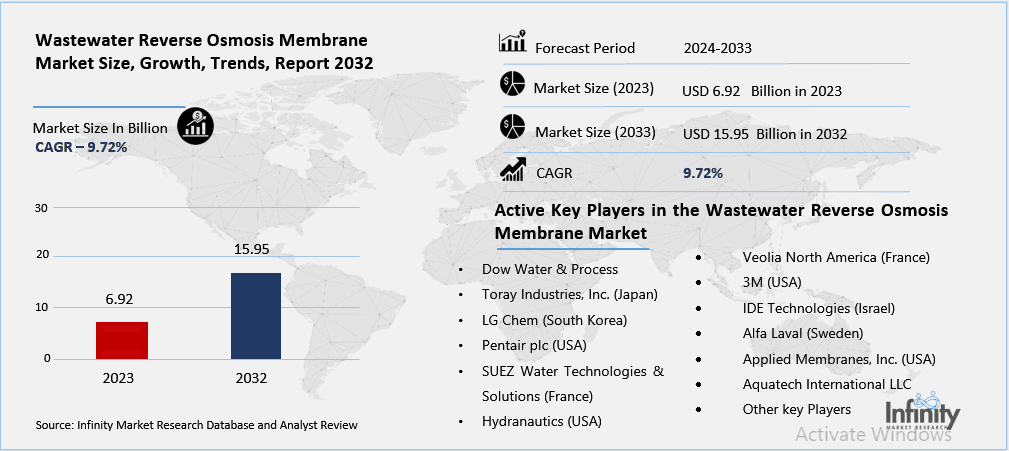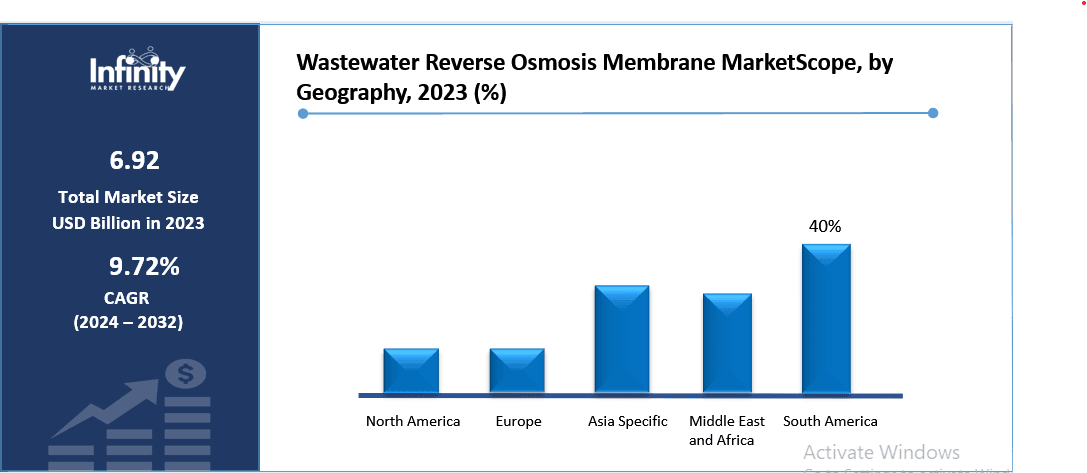
🔐 Secure Payment Guaranteed
Safe checkout with trusted global payment methods.
🌟 Why Choose Infinity Market Research?
At Infinity Market Research, we dont just deliver data — we deliver clarity, confidence, and competitive edge.
In a world driven by insights, we help businesses unlock the infinite potential of informed decisions.
Here why global brands, startups, and decision-makers choose us:
Industry-Centric Expertise
With deep domain knowledge across sectors — from healthcare and technology to manufacturing and consumer goods — our team delivers insights that matter.
Custom Research, Not Cookie-Cutter Reports
Every business is unique, and so are its challenges. Thats why we tailor our research to your specific goals, offering solutions that are actionable, relevant, and reliable.
Data You Can Trust
Our research methodology is rigorous, transparent, and validated at every step. We believe in delivering not just numbers, but numbers that drive real impact.
Client-Centric Approach
Your success is our priority. From first contact to final delivery, our team is responsive, collaborative, and committed to your goals — because you re more than a client; you re a partner.
Recent Reports
Global Myopia Control Lenses Market Report 2025-33
Hyaluronic Acid-based Dermal Fillers Market Report
Wastewater Reverse Osmosis Membrane Market
Wastewater Reverse Osmosis Membrane Market Global Industry Analysis and Forecast (2024-2032) By Membrane Type(Thin Film Composite (TFC) Membranes, Cellulose Acetate (CA) Membranes), By Application(Industrial Wastewater Treatment, Municipal Wastewater Treatment, Commercial Wastewater Treatment, Other Applications), By End-User(Residential, Commercial, Industrial) and Region
Jan 2025
Energy and Power
Pages: 138
ID: IMR1435
Wastewater Reverse Osmosis Membrane Market Synopsis
Wastewater Reverse Osmosis Membrane Market Size Was Valued at USD 6.92 Billion in 2023, and is Projected to Reach USD 15.95 Billion by 2032, Growing at a CAGR of 9.72% From 2024-2032.
The Wastewater Reverse Osmosis (RO) Membrane Market is the usage of the reverse osmosis system to enrich wastewater by removing impurities in order to be used in industrial, municipal, and commercial sectors. This technology selectively and mechanically filters agents such as impurities, salts, and other particles from water and enhances the quality of water for further consumption or its absorption for discharging.
The global wastewater reverse osmosis membrane market is growing with growing interest in wasteful water scarcity, rising environmental consciousness, and lifting up of higher standards of water resilience. Despite being indispensable in water treatment processes, reverse osmosis membranes are instrumental in eliminating dissolved salts, organic matter and microorganisms in wastewater. It is worth to note that the market is gradually growing due to the factors such as industrialization, urbanization, an increasing need for clean and treated water for different uses. In addition, recovery or reuse of wastewater is becoming popular as it provides solutions to most water shortages problems.
Membrane types including Thin Film Composite (TFC) membranes and enhancements in membrane reliability are driving the market. They have caused enhanced effectiveness of technologies used in water treatment hence making the process cheaper. Another strong force that contributes towards growth of the market is increasing adoption of water treatment particularly in regions that are experiencing fast industrialization that results into huge demand for wastewater treatment. This particularly has been occasioned by the growing emphasis on sustainable and conservation of resources including fresh water and the use of technologies such as reverse osmosis.
Market is believed to be growing further in terms of demand and a progressive move towards sustainable layouts including use of bio-degradable membranes and enhanced energy productivity in related systems. Other factors that are also boost the market include, the regulatory and governmental policies for Water Conservation and Wastewater Management. Also, the increasing population and urbanization around the world increase the requirement for high-tech wastewater treatment technologies, and thus, the application of reverse osmosis membranes.
Wastewater Reverse Osmosis Membrane Market Outlook, 2023 and 2032: Future Outlook

Wastewater Reverse Osmosis Membrane Market Trend Analysis
Trend: Advancements in Membrane Materials and Efficiency
Another major trend of the wastewater reverse osmosis membranes is steady enhancement of its basic characteristics, such as fouling resistance, permeate quality, energy efficiency and longer life span of the membranes. The main emphasis is made on the development of theThin Film Composite (TFC) membranes with higher salt rejection, higher flux as well as improved fouling resistance. These innovations improve performance of the various applications in water treatment industries, particularly in the industrial water treatment where high efficiency and endurance of the machines are essential. The professionals are also working on new carbon nanotubes and nanocomposites, which, if incorporated into the membranes and systems, can completely change the effectiveness of the membrane technology due to the higher filtration factor and lower maintenance time.
Another important trend is digital and automation in reverse osmosis system, as digital systems in automation is the future. New technologies such as sensors, AI, and the IoT have been applied to measure the membrane performance, observe fouling and energy efficiency issues. They help to process data in real time and provide an opportunity for effective maintenance, more on the efficiency of systems. This trend is particularly helpful for industries and municipalities with large centralized water treatment plants, usually, providing a constant water supply, the system’s efficiency and lack of downtime are critical for maintaining plant production.
Opportunity: Expansion of Wastewater Recycling and Reuse
One of the trends which will drive the growth of the wastewater reverse osmosis membrane market is the particular emphasis placed on wastewater recycling and reuse, especially in water-scarce countries. As industries, municipalities, and governments realized the need for sustainable water management, the need for better filtration technologies is rising . Ro membranes are very vital tools in the removal of contaminants in water making it safe for reuse in irrigation, industrial and municipal purposes. Wastewater recycling can be put forward as an effective way of exerting pressure off the natural sources of fresh water, thus encouraging Water resource sustainability, and decreasing reliance on freshwater resources.
Wastewater reuse programs that have been adopted in the developed and the developing world offer a market opportunity to reverse osmosis membrane manufacturers. The governments and industries worldwide are installing new treatment plants, conducing research and development, and designing new challenging projects to reach the environmental goals, driving revenue growth for the membrane market players. Also, the issues connected with the lack of fresh water in cities and in arid zones promote the use of technologies for recycling water from the sewage systems, creating additional demand for water recycling systems, and boosting the industry. As a result of this adoption, the possibility of reverse osmosis membranes in the water treatment solutions in various sectors increases.
Driver: Increasing Demand for Clean and Safe Water
They found that the continual need for clean and safe water for domestic, commercial and industrial usage remains the key factor influencing the growth of the wastewater reverse osmosis membrane market. Thanks to the increasing awareness of water contamination and industrial emissions, pollutions, climate shifts, and change, efficient Water Treatment Technologies are now exigent. Reverse osmosis membrane provide a consistent and effective way of filtering out some of the undesirable components from the water such as heavy metals, salts, undesirable micro-organisms making water fit for use in the industrial, municipal and domestic sectors.
Since the trends in industrialisation and urbanisation are on the rise internationally, it can be presumed that the need for water treatment technologies will increase accordingly. In addition, environmental regulation measures on discharge of wastewater and quality of water are pressing forward development of advanced water treatment facility such as reverse osmosis. The author also puts emphasis on growing population, especially in the developing area, as another driving force for the development of efficient water use and management solutions. Summing up these factors makes reverse osmosis technology an indispensable tool to solve existing problems related to water supply, to ensure further generations with clean and safe water supply.
Restraints: High Operational Costs
The high operational costs of reverse osmosis systems are restraining the wastewater reverse osmosis membrane market to a large extent. Although the technology is very efficient, it involves the use of energy, which makes the operation expensive and a high cost of operations. Further, costs associated with maintaining and replacement of membranes are high because fouling and scaling of membranes will shorten their useful life. These costs can become an issue, especially when industries which are SMP or small and medium-sized municipalities could not afford large amounts of money for water treatment.
Membrane technology is still relatively expensive in terms of capital costs together with energy demands that make reverse osmosis systems comparatively expensive than other water treatment technologies for example activated sludge or bio-logical treatment mechanisms. Therefore, while reverse osmosis is effective in desalination, its viability may be limited as firms and government departments may be reluctant to adopt it when the cost implication outcompares the benefits of lessening water pollution. Nevertheless, constant technological improvements in the membrane and the energy recovery devices are making the reverse osmosis process less cost-intensive in the future.
Wastewater Reverse Osmosis Membrane Market Segment Analysis
Wastewater Reverse Osmosis Membrane Market Segmented on the basis of membrane type, application and end user.
By Type
o Thin Film Composite (TFC) Membranes
o Cellulose Acetate (CA) Membranes
By Application
o Industrial Wastewater Treatment
o Municipal Wastewater Treatment
o Commercial Wastewater Treatment
o Other Applications
By Region
o North America (U.S., Canada, Mexico)
o Eastern Europe (Bulgaria, The Czech Republic, Hungary, Poland, Romania, Rest of Eastern Europe)
o Western Europe (Germany, UK, France, Netherlands, Italy, Russia, Spain, Rest of Western Europe)
o Asia Pacific (China, India, Japan, South Korea, Malaysia, Thailand, Vietnam, The Philippines, Australia, New-Zealand, Rest of APAC)
o Middle East & Africa (Turkey, Bahrain, Kuwait, Saudi Arabia, Qatar, UAE, Israel, South Africa)
o South America (Brazil, Argentina, Rest of SA)
By Membrane Type, Thin Film Composite (TFC) Membranes segment is expected to dominate the market during the forecast period
The market for wastewater reverse osmosis membranes can be categorized into two major types: , TFC type membranes and CA type membranes are available as Thin Film Composite membranes and Cellulose Acetate membranes. TFC membranes are used most often because of their relatively high permeability, low fouling tendency and longer service life as compared with other membranes. Such membranes are commonly employed in industrial wastewater treatment plants since efficiency and long service durability are paramount. The usage of TFC membrane is forecasted to remain the largest in the wastewater treatment market owing to high efficiency in the elimination of impurities and salts contained in wastewater.
Similarly, Cellulose Acetate (CA) membranes, though less sturdy compared with TFC membranes they are also being used in some applications where, cost of membrane is given more preference over the performance of the membrane. CA membranes are more prone to fouling but the cost of such membranes is less than that of PA membranes, and hence it is generally used in commercial and municipal wastewaters treatment plants. Nonetheless, the scouts of better quality water treatment means better adoption of TFC membranes, especially in the difficult industrial wastewater treatment.
By Application, Industrial Wastewater Treatment segment expected to held the largest share
Based on application the wastewater reverse osmosis membrane market categorised into industrial wastewater treatment, municipal wastewater treatment, commercial wastewater treatment and other applications. Industrial wastewater treatment is the largest segment basically due to increase in industrialization and an increased amount of wastewater from industries such as manufacturing, petrochemical, and food industry. These applications require reverse osmosis membranes to achieve the required environmental quality of water that is fit for discharge or reuse.
The municipal wastewater treatment segment is the other large category, given the growing world population, and more importantly urbanization as well as growing need for proper water management in urban areas. Local authorities are incorporating that technology in their systems to address tight legal requirements on wastewater treatment and better water quality. Further, treated wastewater generated by commercial establishments and in food processing plants, hotels and hospitals also fosters the use of reverse osmosis membranes. In addition, the increasing demand for water and wastewater treatment in different industries also makes reverse osmosis technology as one of the most important solutions addressing water problems around the world.
Wastewater Reverse Osmosis Membrane Market Regional Insights:
North America is Expected to Dominate the Market Over the Forecast period
North America is presently the major region in the wastewater reverse osmosis membrane market. The United States and Canada have already built appropriate framework for water treatment including such approaches as reverse osmosis to provide high-quality water and meet strict environmental standards. Hence, the demand for the recycling and reuse of wastewater in the region, especially for water scarce areas such as California, increases the uptake of reverse osmosis systems.
North America has actively incorporated sustainability along with resource conservationism in the regional market for enhanced water treatment solutions. Policies and programmes launched by government that focus on water conservation and some of the key players of the market situated in this region give North America an edge. Since more industries invest in water reuse in the upcoming years, the future of reverse osmosis membranes demand especially in industrial and municipal purpose remains high.
Wastewater Reverse Osmosis Membrane Market Share, by Geography, 2023 (%)

Active Key Players in the Wastewater Reverse Osmosis Membrane Market
o Dow Water & Process Solutions (USA)
o Toray Industries, Inc. (Japan)
o LG Chem (South Korea)
o Pentair plc (USA)
o SUEZ Water Technologies & Solutions (France)
o Hydranautics (USA)
o Veolia North America (France)
o 3M (USA)
o IDE Technologies (Israel)
o Alfa Laval (Sweden)
o Applied Membranes, Inc. (USA)
o Aquatech International LLC (USA)
o Other key Players
Global Wastewater Reverse Osmosis Membrane Market Scope:
|
Global Wastewater Reverse Osmosis Membrane Market | |||
|
Base Year: |
2023 |
Forecast Period: |
2024-2032 |
|
Historical Data: |
2017 to 2023 |
Market Size in 2023: |
USD 6.92 Billion |
|
Forecast Period 2024-32 CAGR: |
9.72% |
Market Size in 2032: |
USD 15.95 Billion |
|
Segments Covered: |
By Membrane Type |
· Thin Film Composite (TFC) Membranes · Cellulose Acetate (CA) Membranes | |
|
By Application |
· Industrial Wastewater Treatment · Municipal Wastewater Treatment · Commercial Wastewater Treatment · Other Applications | ||
|
By Region |
· North America (U.S., Canada, Mexico) · Eastern Europe (Bulgaria, The Czech Republic, Hungary, Poland, Romania, Rest of Eastern Europe) · Western Europe (Germany, UK, France, Netherlands, Italy, Russia, Spain, Rest of Western Europe) · Asia Pacific (China, India, Japan, South Korea, Malaysia, Thailand, Vietnam, The Philippines, Australia, New-Zealand, Rest of APAC) · Middle East & Africa (Turkey, Bahrain, Kuwait, Saudi Arabia, Qatar, UAE, Israel, South Africa) · South America (Brazil, Argentina, Rest of SA) | ||
|
Key Market Drivers: |
· Increasing Demand for Clean and Safe Water | ||
|
Key Market Restraints: |
· High Operational Costs | ||
|
Key Opportunities: |
Expansion of Wastewater Recycling and Reuse | ||
|
Companies Covered in the report: |
Dow Water & Process Solutions (USA), Toray Industries, Inc. (Japan), LG Chem (South Korea), Pentair plc (USA), SUEZ Water Technologies & Solutions (France), Hydranautics (USA), and Other Major Players. | ||
📘 Frequently Asked Questions
1. What would be the forecast period in the Wastewater Reverse Osmosis Membrane Market research report?
Answer: The forecast period in the Wastewater Reverse Osmosis Membrane Market research report is 2024-2032.
2. Who are the key players in the Wastewater Reverse Osmosis Membrane Market?
Answer: Dow Water & Process Solutions (USA), Toray Industries, Inc. (Japan), LG Chem (South Korea), Pentair plc (USA), SUEZ Water Technologies & Solutions (France), Hydranautics (USA), and Other Major Players.
3. What are the segments of the Wastewater Reverse Osmosis Membrane Market?
Answer: The Wastewater Reverse Osmosis Membrane Market is segmented into Membrane Type, Application, End User and region. By Membrane Type, the market is categorized into Thin Film Composite (TFC) Membranes, Cellulose Acetate (CA) Membranes. By Application, the market is categorized into Industrial Wastewater Treatment, Municipal Wastewater Treatment, Commercial Wastewater Treatment, Other Applications. By End-User, the market is categorized into Residential, Commercial, Industrial. By region, it is analyzed across North America (U.S.; Canada; Mexico), Eastern Europe (Bulgaria; The Czech Republic; Hungary; Poland; Romania; Rest of Eastern Europe), Western Europe (Germany; UK; France; Netherlands; Italy; Russia; Spain; Rest of Western Europe), Asia-Pacific (China; India; Japan; Southeast Asia, etc.), South America (Brazil; Argentina, etc.), Middle East & Africa (Saudi Arabia; South Africa, etc.).
4. What is the Wastewater Reverse Osmosis Membrane Market?
Answer: The Wastewater Reverse Osmosis (RO) Membrane Market is the usage of the reverse osmosis system to enrich wastewater by removing impurities in order to be used in industrial, municipal, and commercial sectors. This technology selectively and mechanically filters agents such as impurities, salts, and other particles from water and enhances the quality of water for further consumption or its absorption for discharging.
5. How big is the Wastewater Reverse Osmosis Membrane Market?
Answer: Wastewater Reverse Osmosis Membrane Market Size Was Valued at USD 6.92 Billion in 2023, and is Projected to Reach USD 15.95 Billion by 2032, Growing at a CAGR of 9.72% From 2024-2032.


🔐 Secure Payment Guaranteed
Safe checkout with trusted global payment methods.
🌟 Why Choose Infinity Market Research?
- Accurate & Verified Data:Our insights are trusted by global brands and Fortune 500 companies.
- Complete Transparency:No hidden fees, locked content, or misleading claims — ever.
- 24/7 Analyst Support:Our expert team is always available to help you make smarter decisions.
- Instant Savings:Enjoy a flat $1000 OFF on every report.
- Fast & Reliable Delivery:Get your report delivered within 5 working days, guaranteed.
- Tailored Insights:Customized research that fits your industry and specific goals.




